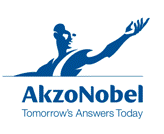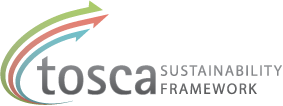Value chain activities
- Identify your product value chain
- Strategy & organisation
- Upstream supply chain
- Own manufacturing
- Customers and consumers
- Develop more sustainable products
- End-of-life of products
- Other stakeholders
Navigation by keywords

AkzoNobel: Eco-Efficiency assessment in the R&D process
By Emma Ringström & Johan Widheden
This is an example from AkzoNobel on how eco-efficiency assessment can be used to develop a more sustainable production processes.
 It is valuable to assess a new product or solution, with regard to sustainability already in the R&D phase. The R&D departments in AkzoNobel have qualitative guidelines as criteria on sustainability performance in the eco-premium solutions activities EPS, but in some cases there is a need of quantified comparisons. The trick is to find a good timing. The R&D project should not have proceeded so far that there are no room to maneuver and on the other side there need to be enough information to make it possible to perform a quantitative comparison.
It is valuable to assess a new product or solution, with regard to sustainability already in the R&D phase. The R&D departments in AkzoNobel have qualitative guidelines as criteria on sustainability performance in the eco-premium solutions activities EPS, but in some cases there is a need of quantified comparisons. The trick is to find a good timing. The R&D project should not have proceeded so far that there are no room to maneuver and on the other side there need to be enough information to make it possible to perform a quantitative comparison.
This example is from a project with the aim to produce a solvent in a new process route using a new raw material. This raw material exchange was foreseen to be positive for the end products eco-footprint. An eco-efficiency assessment can verify if that will be the case already in the R&D phase.
To assess the effects of the new process route an eco-efficiency study was carried out in two steps.
In the first step an eco-efficiency assessment comparing the new process route with the commercial process route, with respect to environment and economy was carried out. This part of the study resulted in an understanding of the strong and weak points of the new process route already in the R&D phase of the project.
In the second step the effects of the change of raw material and process route, on the eco-efficiency of the end product was assessed .

